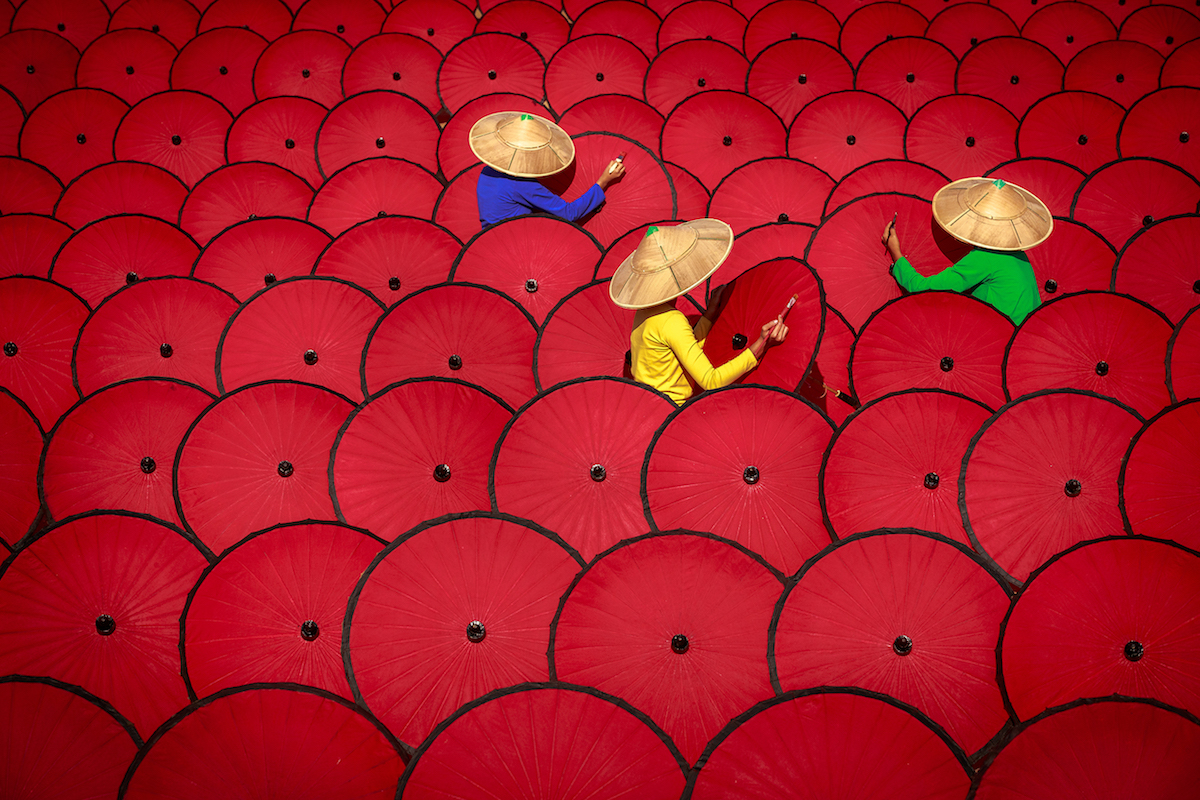
“The Colors,” by Zarni Myo Win, Myanmar, entry, Open, Travel. “Three women workers painting traditional Myanmar umbrellas. This image was taken to create the colors red, green, blue and yellow. I set up this photograph up with these colors deliberately. The umbrellas are traditional in Myanmar and women workers paint them in their daily working life. When I saw these beautiful umbrellas, I was inspired by the colors and patterns. I shot this scene four times and it took four months. It includes a special colored umbrella which is different from normal umbrellas, without black lines. I eventually set up all things—the umbrellas, the working women wearing primary colors, and including the beautiful patterns.”
After a record number of entries in 2018, the Sony World Photography Awards are well on their way to another successful competition. This leading free photography competition has taken place for the past 12 years and is divided into four divisions—Professional, Open, Youth, and Student. To celebrate the announcement of this year’s expert jury, the World Photo Organisation has released early highlights of the Open contest, which rewards the world’s best single images.
Participants can submit work to 10 different categories that capture the wide variety of artistry in the field of photography. From inspiring travel photos to touching portraits, it’s impossible not to be moved by the talent of these photographers. Notable entries include Christy Lee Rogers, known for her dynamic underwater photographs that look like Baroque paintings.
One overall winner will be named Open Photographer of the Year and receive a $5,000 cash prize, Sony digital imaging equipment, as well as flight and accommodations in London for the awards ceremony. Individual category winners will also receive Sony equipment. Moreover, all winners will have their work exhibited at Somerset House in London.
Photographer and producer Mike Trow, who is chairing the jury for the Professional contest has some words of wisdom for entrants. “My advice for entrants is to choose your categories carefully and believe in your story. Show how you see the world, and avoid cliché. Photography techniques and styles are getting more adventurous and dynamic, so technical excellence is also necessary. To impress this world-leading panel of judges will take your best output, and the ability to edit your work so it is coherent, dynamic and beautiful.”
Submissions to the 2019 Sony World Photography Awards Open competition are being accepted until January 4, 2019.
Early highlights from the 2019 Sony World Photography Awards demonstrate how fierce this year’s competition will be.
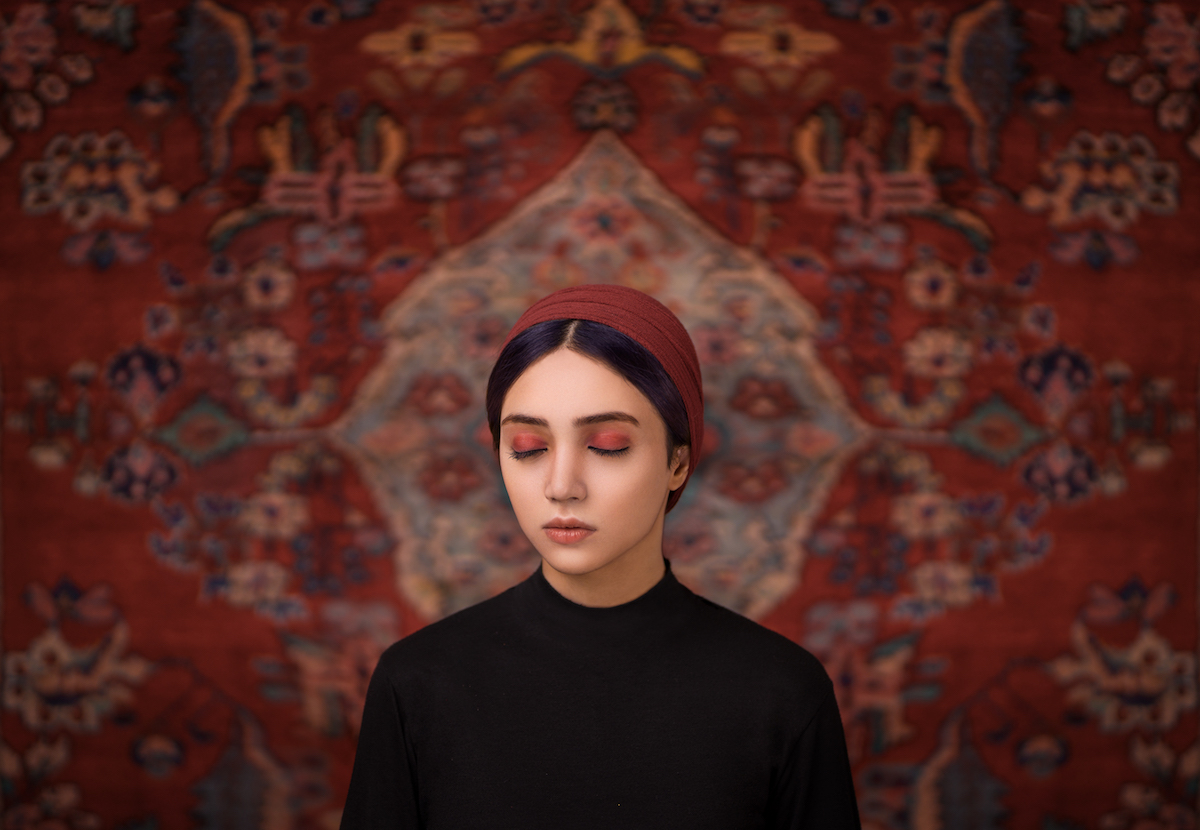
“Culture,” by Hasan Torabi, Iran, entry, Open, Portraiture. “The purpose of this photo is to show Iranian women and Iranian culture or Iranian tradition.”
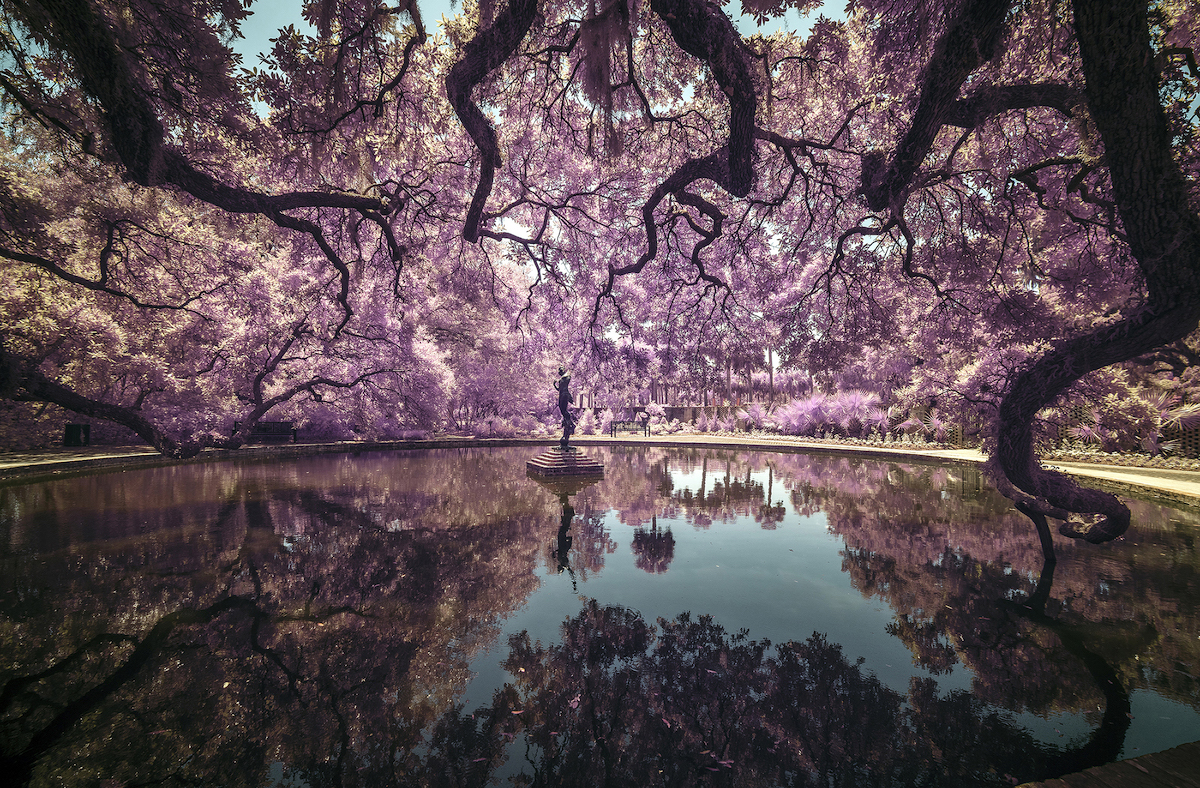
“Bookgreen Garden,” by Tonino Vicari, United States of America, entry, Open, Landscape. “A photograph of Brookgreen Garden. All I can say that the magic of the landscape garden is a perfect example of when man and nature can live together in harmony and peace.”
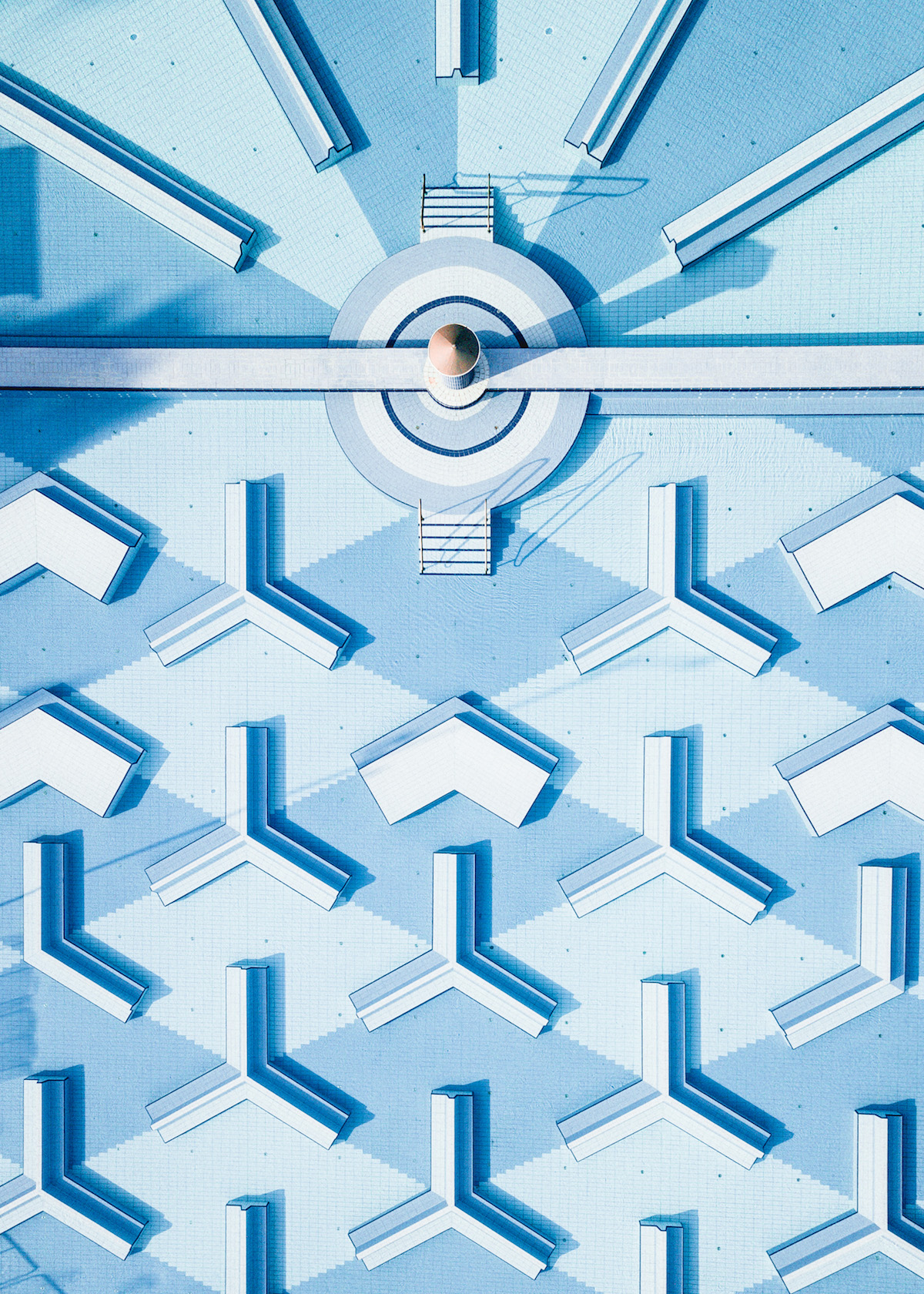
“Pool,” by Patrik Szeleczkei, Hungary, entry, Open, Architecture. “Aerial shot of a pool in Hungary, Budapest.”

“King of the Ice Castle,” by Sylvia Michel, Switzerland, entry, Open, Travel. “I love to experience new adventures with my dog. Sleeping in an igloo was a big part of my to-do list. When we entered the igloo, my dog Rasta jumped on the skins and posed as if he had been living here forever. In this Iglu he felt very comfortable. We just came in and he jumped on the sheep fur, laid down and looked like the king of the ice castle. At that moment I pressed the shutter button and so this picture was taken. Traveling is so much more fun with a good friend. The picture was taken on the first of January 2018, at Igludorf Zermatt.”
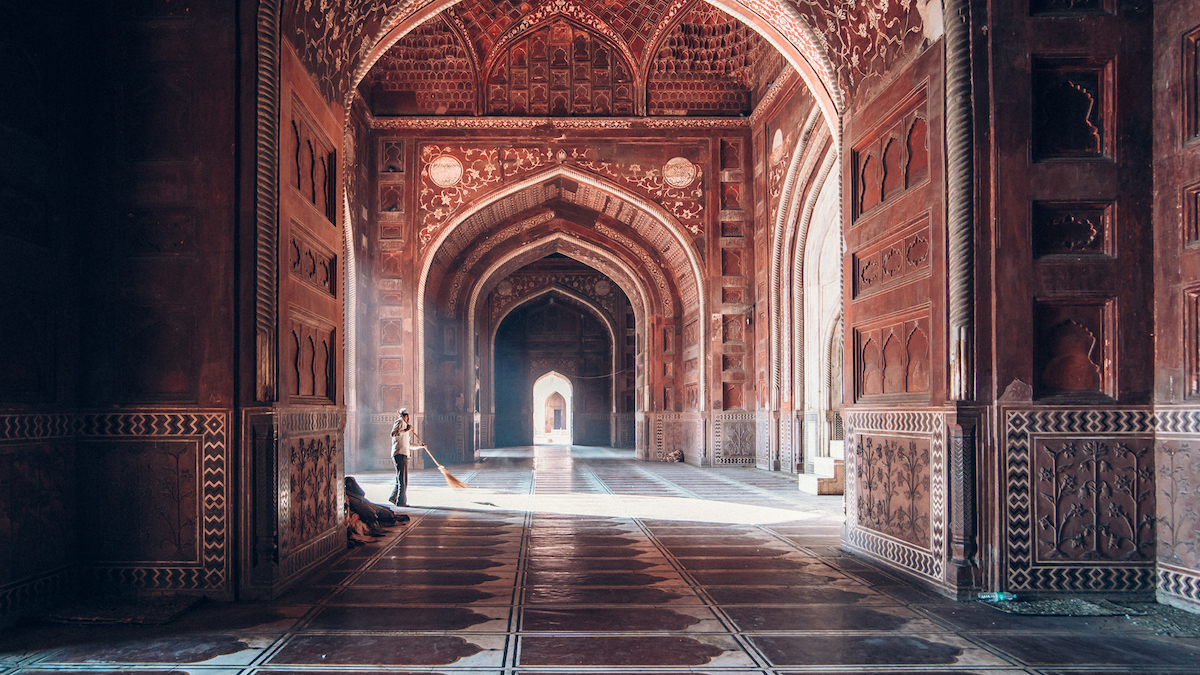
“Morning Light,” by Aleksandr Reshnia, Russian Federation, entry, Open, Travel. “Morning sunlight through archways in the mosque of Taj Mahal complex, Agra, India, March 2018. It is difficult to find a person who does not know the Taj Mahal—the most famous and one of the most visited attractions of India. Even if you come before dawn, you will be surprised how many people want to be among the first who want to capture the classic look of the mausoleum. However, on the large territory of the complex you can find islands of silence and tranquility. This picture was taken in a mosque in the western part of the park. I liked the contrast between the greatness of architecture and the moment of everyday work. Beautiful morning light filled the scene with the soul.”
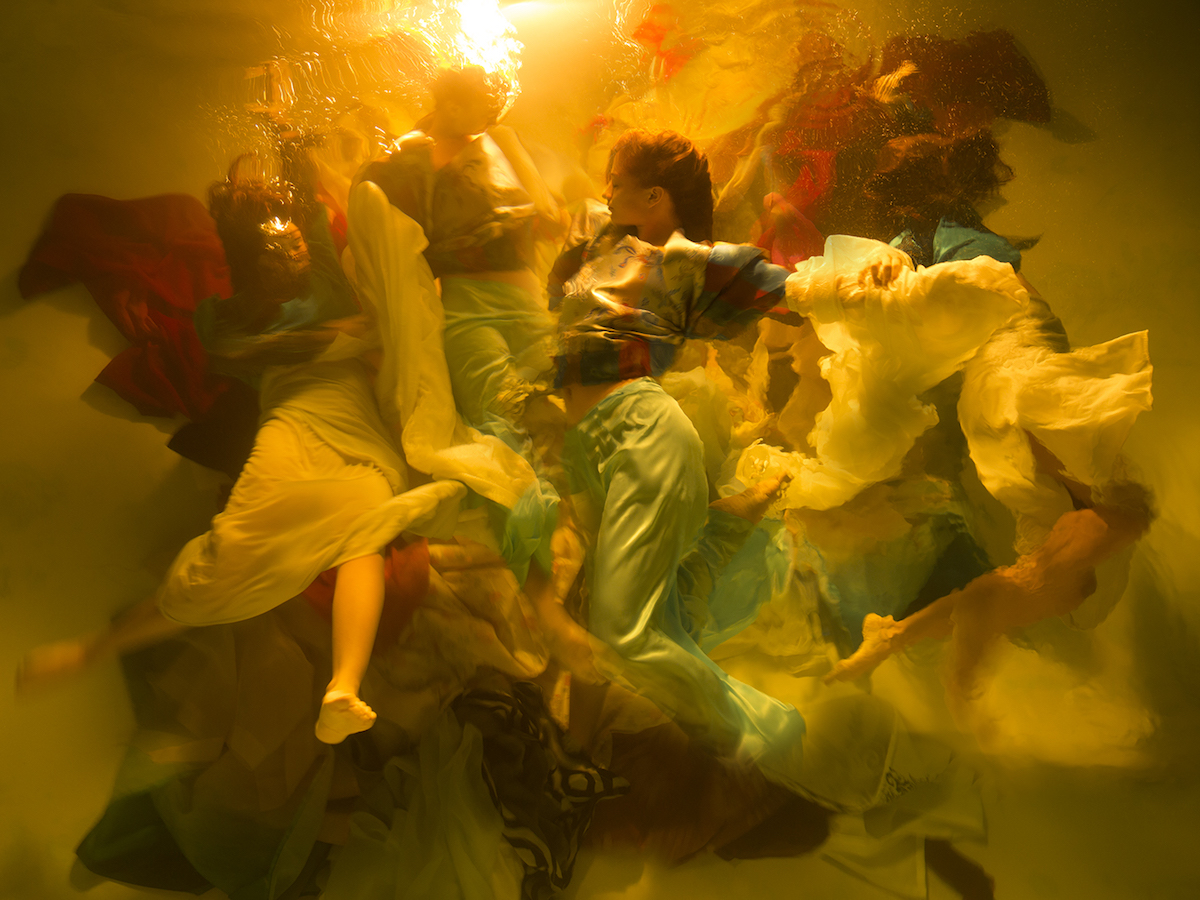
“Harmony,” by Christy Lee Rogers, United States of America, entry, Open, Motion. “Shot underwater in Hawaii, this image is part of my Muses Collection. What started to work best for me was having a perspective from outside of the water, looking in and using the surface of a pool as a canvas, utilizing natural effects like the refraction of light with movement to bend reality, and shooting at night so I could really control my light. The image represents a soft and peaceful place that I imagine exists, where you can be free to let go and experience the beauty surrounding you. And that is my wish for everyone.”
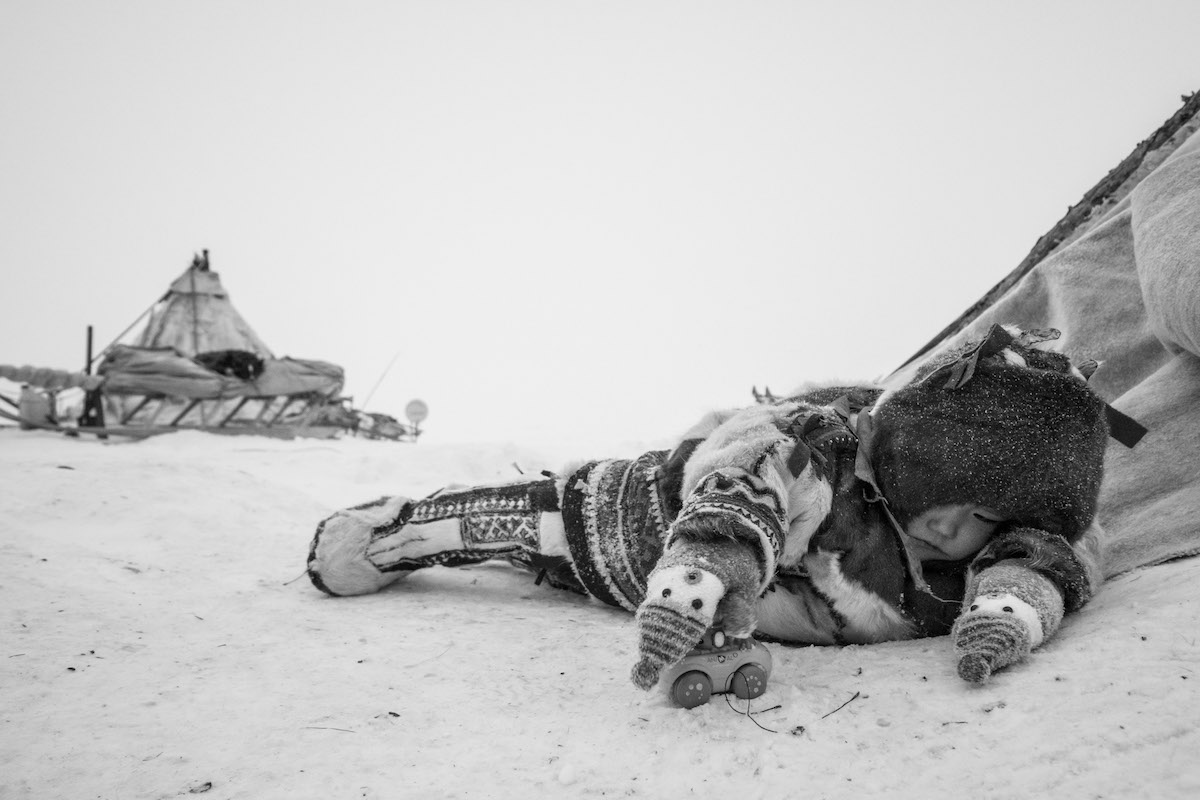
“Ice Playing,” by Marco Marcone, Italy, entry, Open, Culture. “Yamal (Siberia). April 2018. The Nenets have had to face the threat of extinction before, having endured the challenges of colonial intrusions, civil war, revolution and forced collectivisation. Today, their herding way of life is again seriously threatened. Under Stalin, Nenets communities were split into groups known as brigades and forced to live on collective farms and villages called kolkhozy. Each brigade was obliged to pay reindeer meat as taxes. Children were separated from their families and sent to government-run boarding schools, where they were forbidden to speak their own language. With the collapse of communism, young adults began to leave their villages for cities, a trend which continues today. In urban environments, they find it almost impossible to adapt to life away from the cyclical rhythms of the tundra, and suffer from high levels of alcoholism, unemployment, and mental health problems.”

“Stuck in the sea ice,” by Marco Gaiotti, Italy, entry, Open, Landscape. “Icebergs frozen in the sea ice in Svalbard.”
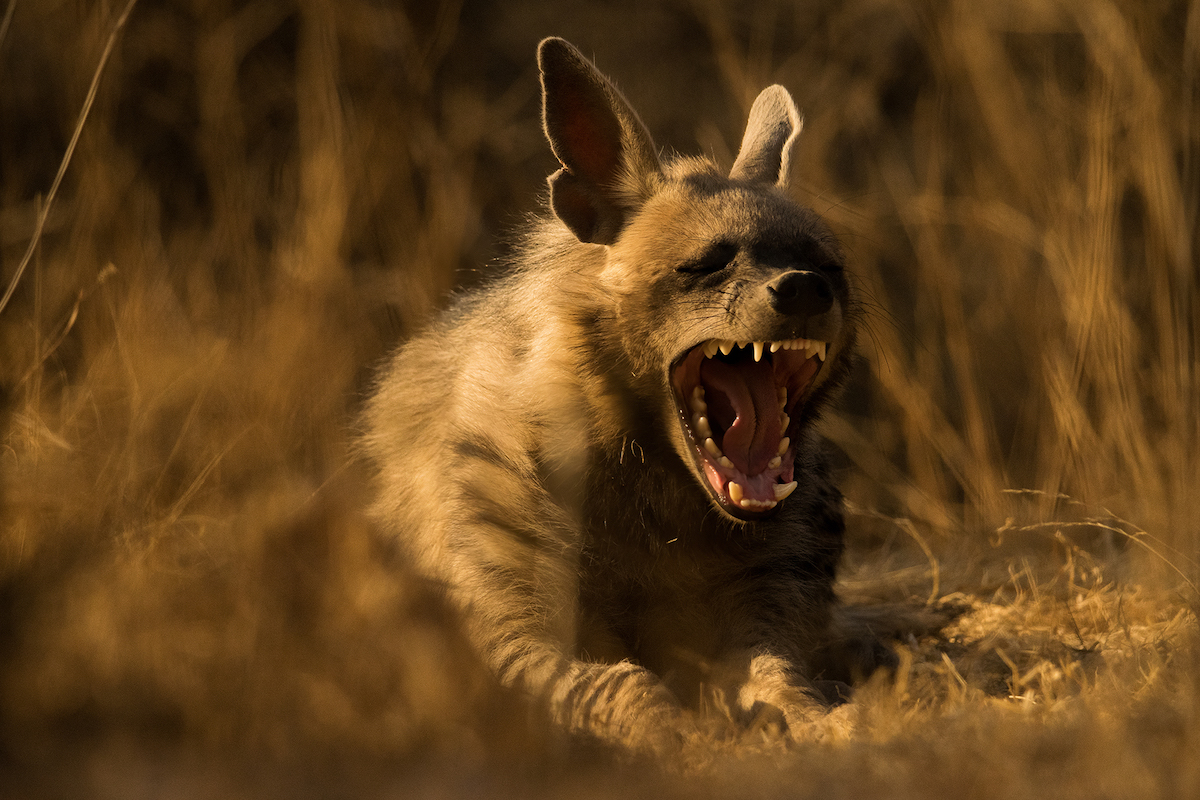
“Day Yawning,” Sohail Inzaman, India, entry, Open, Natural World & Wildlife. “It was during summer, on that day the temperature was around 40 degree Celsius. We were moving towards zone 2 at Jhalana National Park, looking for Hyenas and then we saw him near its den. We were so close, sitting quietly, watching him. As we know they emerge at night and during daytime, they go into their den hiding by sunrise. But I feel lucky that we encounter this adult male Hyena right close to the car. I wanted a ground level shot, for which I had to lean down by the car with a support from my co-passenger. It was a risky job to do but I was happy to get the shot while yawning which made the scene more mesmerizing. And It was such a great feeling to see such animal in their natural habitat up so close.”
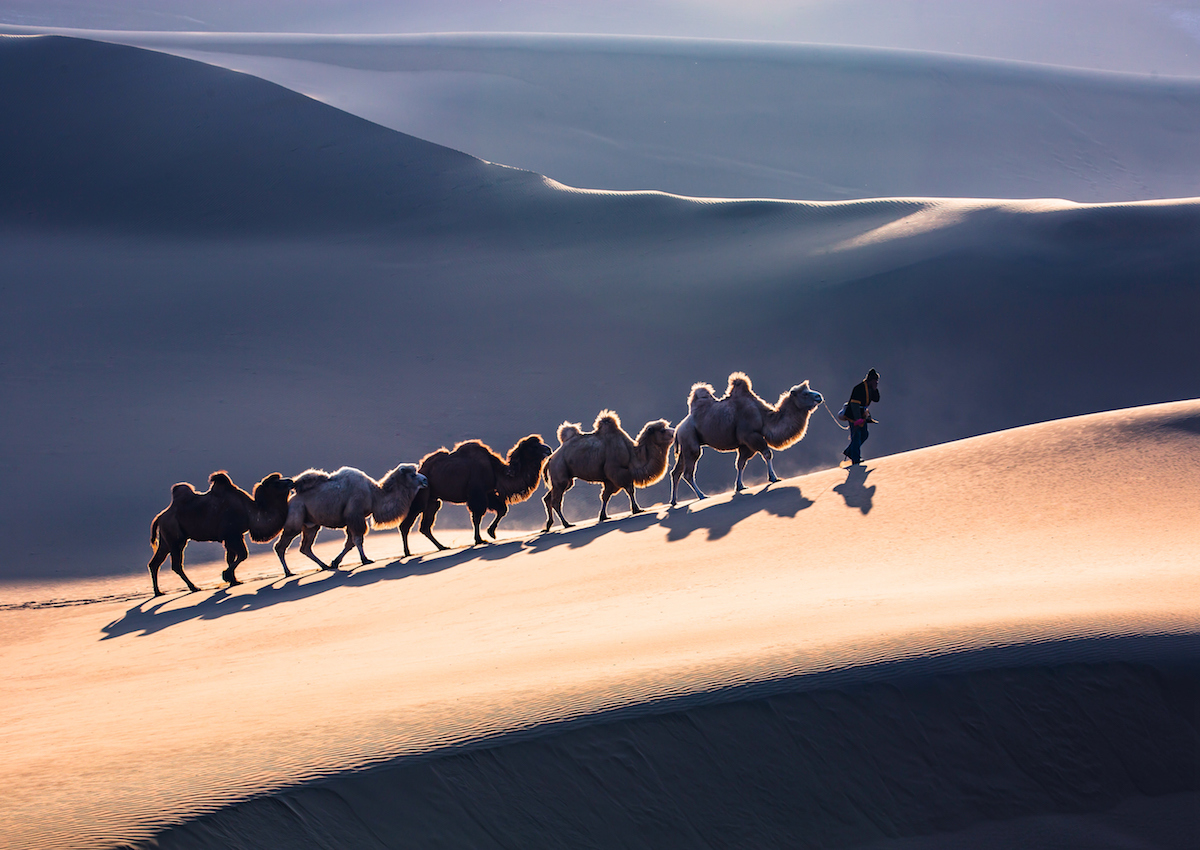
“Camel Train,” by Pang Xiao Zhong, China, entry, Open, Landscape. “The desert camels, set in the sunset, are photographed in Xinjiang, China.”
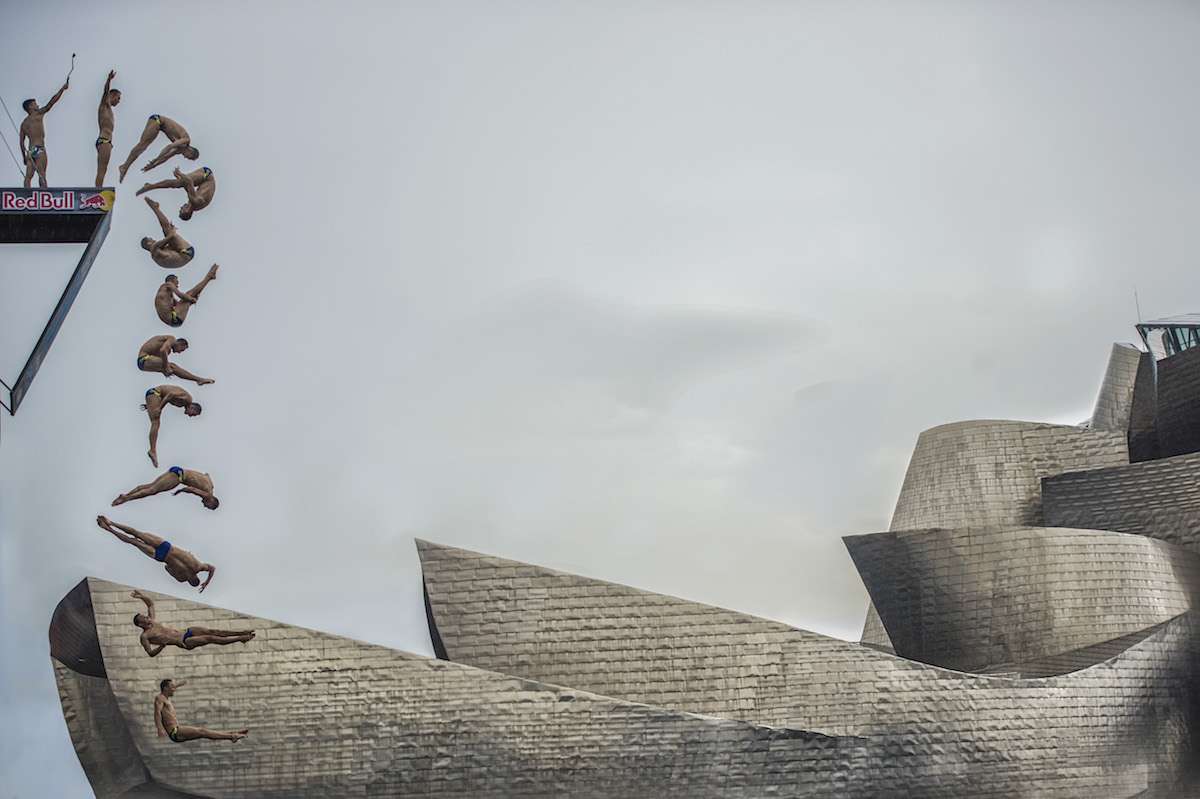
“Michal Navrátil in Bilbao,” by Pedro Luis Ajuriaguerra Saiz, Spain, entry, Open, Motion. “The diver of the Czech Republic Michal Navrátil makes one of his jumps next to the Guggenheim Bilbao, as part of the RedBull Cliffdiving world series 2018. This image shows the sequence of the complete jump from the platform. It is an image that tells us many aspects. On the one hand, we can appreciate the camaraderie that exists between the jumpers in such a demanding and competitive competition, on the other hand, we can also perceive the interest of the athletes in registering and sharing all the unique moments, perhaps in their networks and profiles with its millions of followers, without a doubt a sample of the digital society 3.0 in which we live. On the other hand, seeing the movements so perfect and harmonious all together in the Guggenheim Museum does not leave us indifferent. The idea of multiple photography in such a spectacular frame was in my head, and when the day of the competition arrived – after doing several tests, and once the shooting speed and the camera setting were adjusted and ready – the moment had arrived, and the perfection of Navratil’s dive did the rest.”

“Nuns on Tour,” by Polly Rusyn, United Kingdom, entry, Open, Street Photography. “I was determined to take a photograph of nuns whilst in Rome and it was on my last day that I came across these two, looking cool in their sunglasses happily taking selfies. I positioned myself in front of them and took a couple of shots repositioning myself slightly to ensure the phone was clearly separated from the buildings in the background. I’d convinced myself they were oblivious to my presence even though I was only a matter of feet away from them, but I was wrong! There didn’t seem to mind though and we exchanged smiles and waves as we went our separate ways. I love the shot, as it shows nuns as being just like the rest of us when on holiday!”
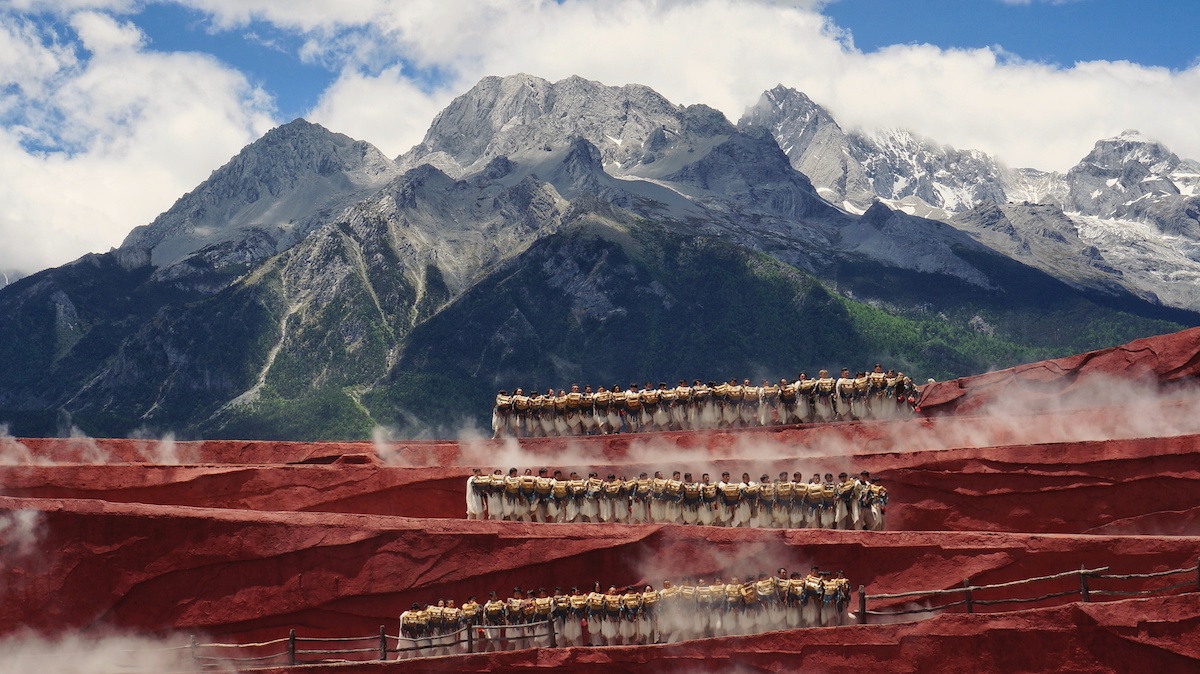
“Dance at the foot of Yulong Mountain,” by Xin Cheng, China, entry, Open, Landscape. “I waited four days for a clear day at the foot of Yulong Mountain. It was pretty when the local people danced at the red stage against the snow-peaked mountain.”
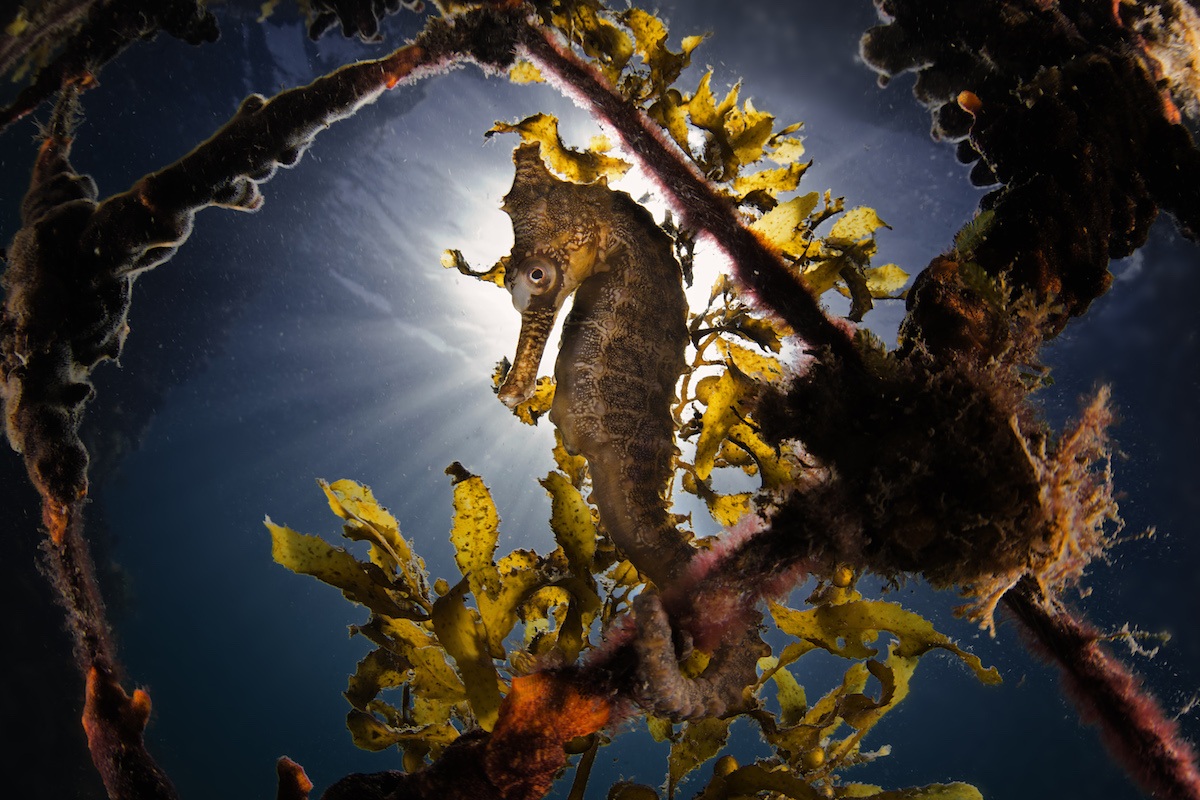
“Against the Sun,” by Gaetano Dario Gargiulo, Australia, entry, Open, Natural World & Wildlife. “Swimming enclosures made up from thick rope meshes are pretty common in NSW (Australia), they get colonized by many forms of marine life seahorses in particular, for this reason among divers we call them “seahorses-hotels”. I intentionally dive at dawn or dusk near these nets to catch seahorses in the best light. This picture was taken at the base of the net (~3m of water) right before the sunset, the seahorse was standing right against the sun, I placed my camera (D800+Tokina 10/17 in Sea&Sea Housing, equipped with 2 Sea&Sea YS250pro sub strobes fitted with special domed diffusers by BubbleScuba) right in front of it and snapped 2-3 frames before that the surge moved the net too close, the seahorse became aware of me and turned away. Yellow coloration for these seahorses are not that uncommon although the most diffused color is white and they live usually on white sponges.”
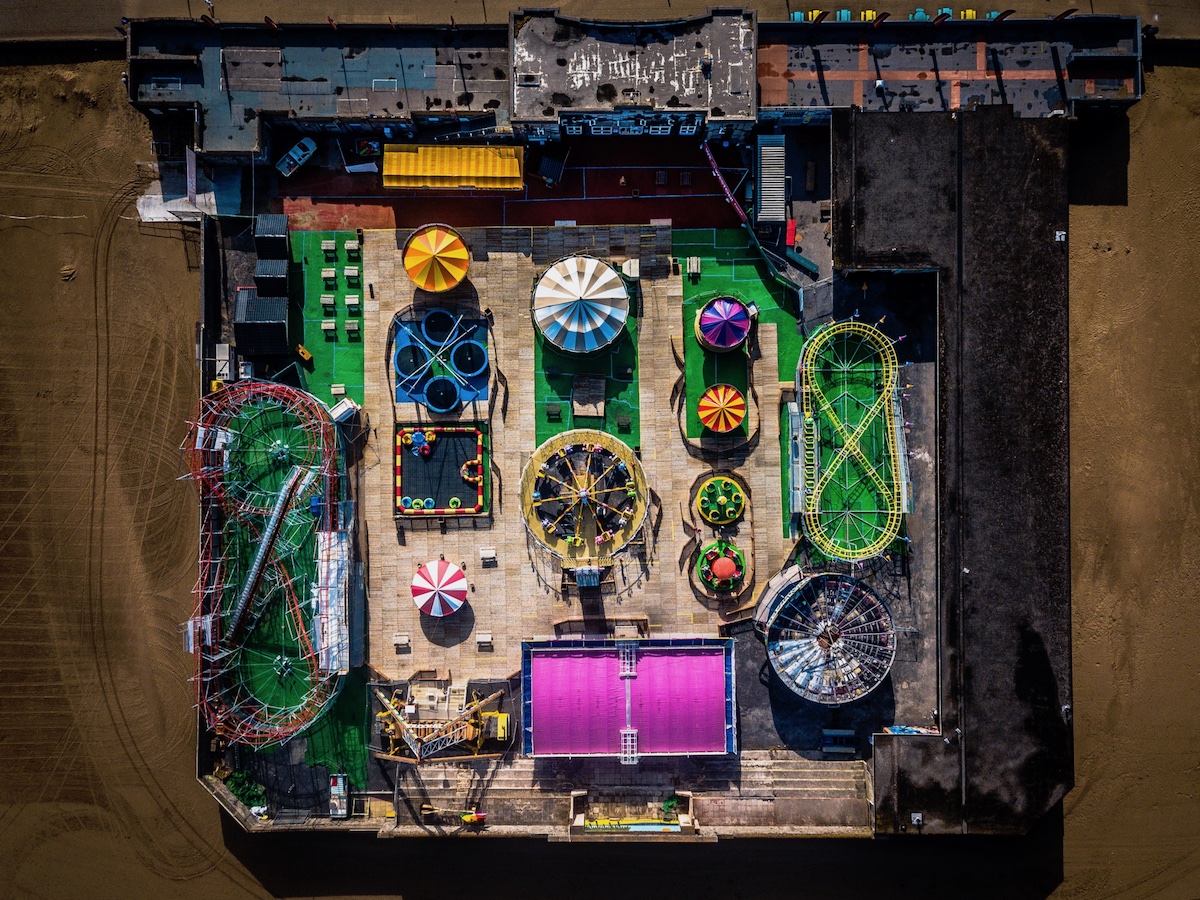
“Circuit Board or Funfair,” by Nicholas E Jones, United Kingdom, entry, Open, Street Photography. “View from above at first glance could be mistaken for a circuit board but this early morning shot of the funfair at Weston Super Mare along the beach.”
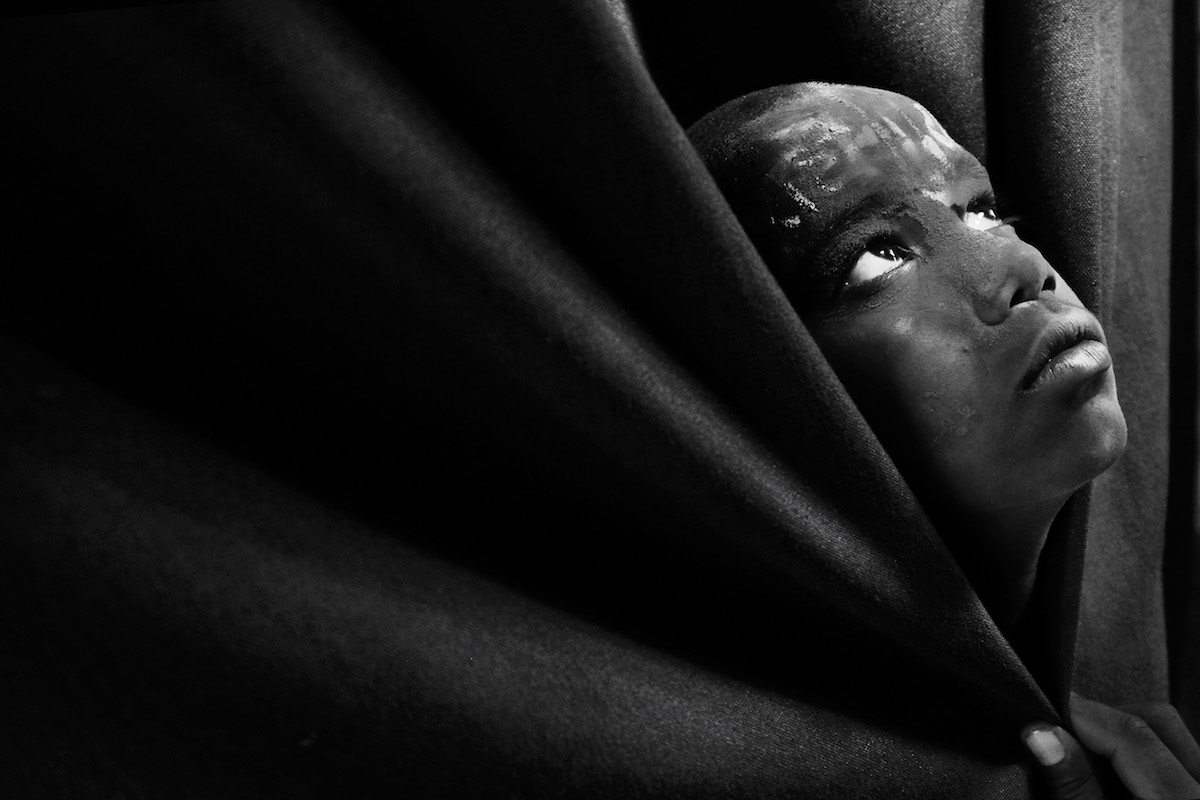
“Up There,” by Christopher Comeso , Philippines, entry, Open, Portraiture. “This was taken during my travel trip to India on their festival of Holi. saw this young Indian boy hiding on the Clothe and took a chance to take this awesome black and white.”
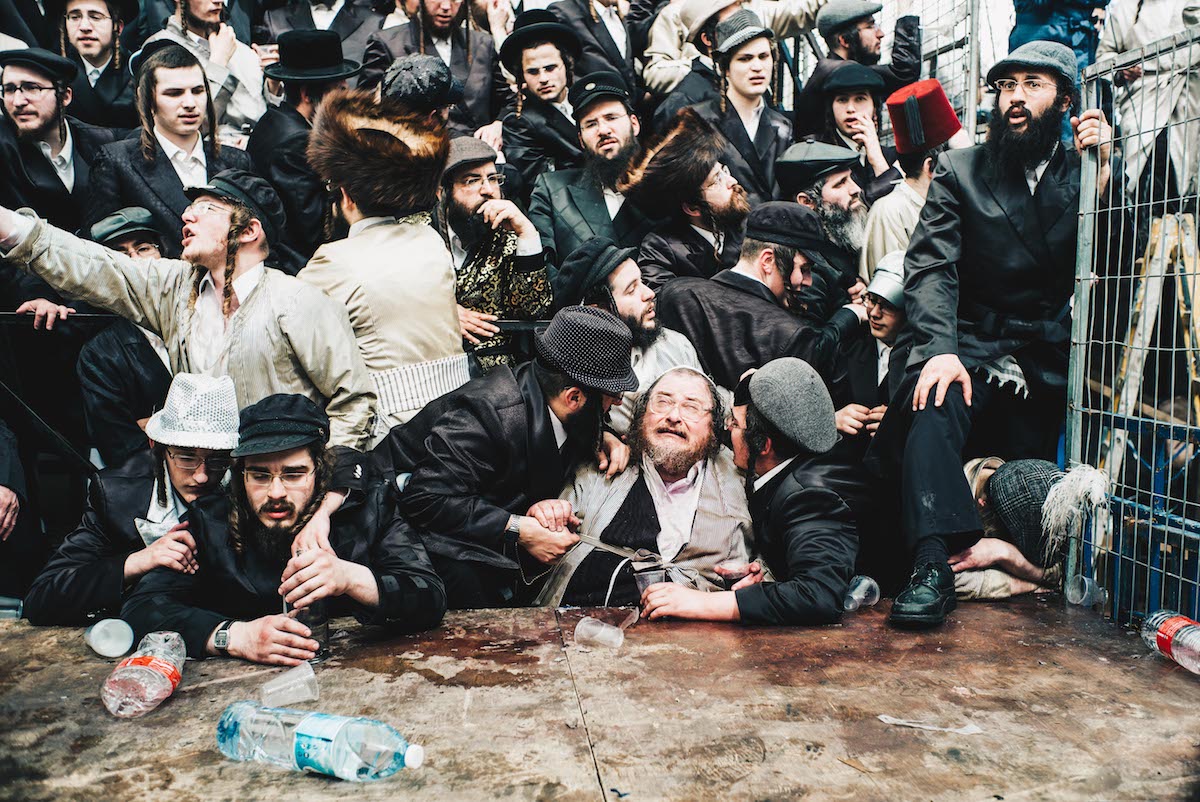
“Pourim Banquet,” by Sebastien Leban, France, entry, Open, Street Photography. “This photo depicts a banquet seen in a religious school during the Pourim celebrations in the ultra religious neighborhood of Mea Shearim in Jerusalem on march 2nd 2018. Purim commemorates the saving of the Jewish people from Haman, who was planning to kill all the Jews. This took place in the ancient Achaemenid Persian Empire. The story is recorded in the Biblical Book of Esther (Megillat Ester in Hebrew). On this special day celebrated all around Israel as a huge festival (costumes and parties), religious people have to fulfill a few missions such as charity to the poor, a banquet and the duty to get drunk until you’re won’t be able to distinguish right from wrong. Mea Shearim is a very closed neighborhood, not easy to access and to photograph, where religious people lived apart from the rest of the Israeli society in a very strong community life. Ultra orthodox people are now almost one million people in Israel. Most of them are really poor because they are not working and they spend all day studying the Bible. The fecundity rate is huge, 6.9 per women and sexual segregation is really strong. The community, due to its growing number and to the right wing government gained a lot of political power in the past years in the country, bringing more and more religious views to Israeli democracy.”
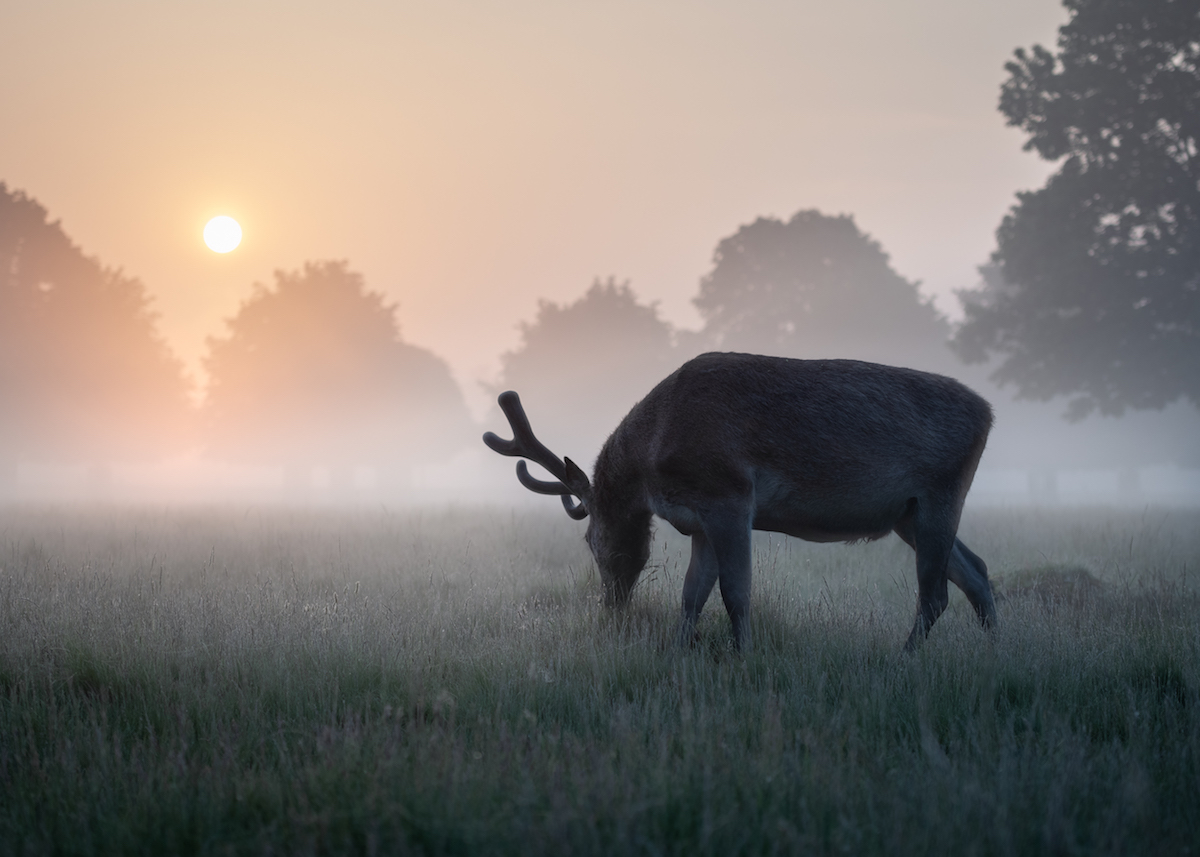
“Summer Morning,” by Matthew Cattell, United Kingdom, entry, Open, Natural World & Wildlife. “A Red Deer stag at dawn on a misty summer’s morning in Bushy Park near London, UK. I’ve been following the Red Deers in the London Parks for the past 3 years, and summer has to be my favorite time of year to photograph them. Stags shed their antlers early in the year and then regrow them over the summer months in preparation for the breeding season or rut in Autumn. This ensures the stag is in perfect condition for the breeding season. Whilst the antlers grow they are covered in a layer of protective velvet which looks stunning when lit in early morning light. During the summer months this means leaving the house at 4am to ensure I have plenty of time to find a Stag before the sun rises too high. On this particular morning there was a beautiful layer of mist veiling the park, adding an ethereal quality to the scene. Having found a Stag I followed him for a while, giving him time to get used to my presence. He was content to graze on the still-green grasses. Given the tranquility of the setting I opted to include this in my composition rather than going in tight for a portrait shot. As the sun started to rise above the treetops, he turned his head towards the light and I took the shot.”
